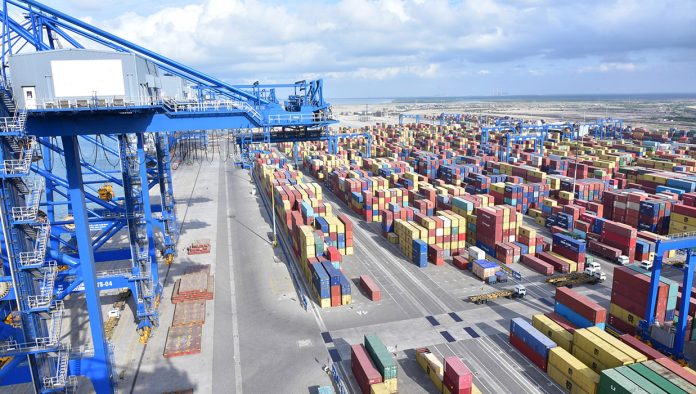
India-Persian Gulf trades seem to be a glaring exception for container lines, as they are rapidly losing the pricing steam they have had from the Red Sea crisis on the larger trade lanes.
Most mainline carriers have announced rate hikes in the form of general rate increases (GRIs) and peak season surcharges (PSSs) for shipments from India to various Middle East ports, from next week.
CMA CGM will hike rates from Nhava Sheva and Mundra to Middle East ports by US$200 per container, from 17 April. The French carrier said in a customer advisory that the GRI is “necessary to provide customers with reliable and efficient service”. The implementation is due to begin with the vessel “Spil Citra” calling at Nhava Sheva on 21 April and Mundra on 23 April.
Similarly, Hapag-Lloyd has announced it will be adding a peak season levy of US$100 per TEU and US$200 per FEU on reefer shipments from India (Nhava Sheva, Mundra and Kandla) to Umm Qasr in Iraq and Dammam in Saudi Arabia. “The PSS is applicable to all sailings commencing on the tariffing date of 20 April 20 and is valid until further notice,” the carrier noted.
Container freight rates have been steady to slightly moving up on the India-Middle East trade lane, especially connecting to Jebel Ali.
Average rates from West India to Jebel Ali are now hovering at US$250 per TEU and US$500 per TEU, according to market sources.
Thanks to a comprehensive economic partnership agreement (CEPA) set up between India and the UAE in 2022, trade volumes between the two nations have seen strong traction in recent years.
This expansion has also prompted many major container lines, including Maersk, to open additional connections on the route. “The India-UAE CEPA is steadily boosting the volumes of trade between the two countries,” pointed out earlier the Danish container giant.
Maersk added, “The main commodities moving between these two countries that will benefit from the increased capacity include FMCG (fast-moving consumer goods) such as electronics, perishables such as foodstuff, retail goods including textile and apparel, and chemicals.”
Both countries aim to push bilateral trade, by value for non-oil trade, to some US$100 billion over the next five years.
Meanwhile, rates from India to Europe/Mediterranean and the United States have seen significant erosion from the highs reported earlier this year, after the Red Sea crisis broke out.
Despite the persistent demand challenges, Indian ports have reported respectable traction in container volumes for the fiscal year 2023-24 which ended in March. Mundra saw 7.4 million TEUs, up 12% year-over-year, while Nhava Sheva boosted its throughput 6% to 6.4 million TEUs, according to the latest data.
Jenny Daniel
Global Correspondent
Contact email: j.daniel@container-news.com





